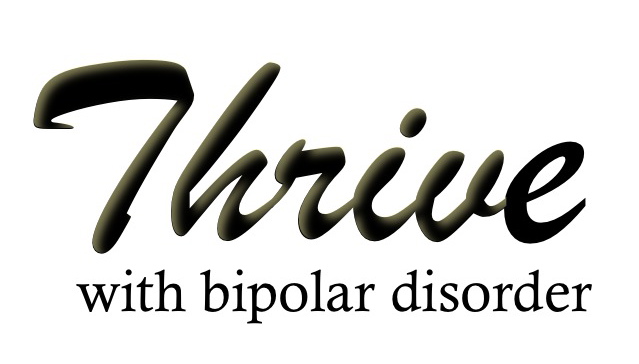The stories we tell ourselves about ourselves have so much power.
One of the great lessons I have learned in my life is that what happens to us matters far less than the stories we tell ourselves about it.
The stories we tell ourselves shape how we think, what we believe about ourselves, the choices we make and the actions we take.
When I was first diagnosed with bipolar disorder, I told myself the “I am crazy” story. Here’s how it worked:
“I am crazy.” This is who I am. It is my whole story.
How this story affected my thoughts: “It doesn’t matter what I think. I am crazy.” and “I am bad.”
How this story affected what I believed about myself : “I have no responsibility and no expectations for myself or from other people. I don’t have to do anything because I can’t. I am crazy.”
How this story affected my choices: “I can’t do….” “I can’t be…” “I can’t try….” “I can’t choose.”
How this story affected my actions: I stayed on the couch in a fetal position with my face buried in the corner. I spoke to no one.
You can take out the word “crazy” from the “I am crazy” story and replace it with several other words and get the same exact effects and results.
This type of story drains away all self-esteem and self-worth. It steals our ability to take responsibility for our lives and have expectations for ourselves. It robs us of qualities that give us strength and courage. It does not allow space for resilience and persistence. This type of story causes us to accept mediocrity.
If you have these kinds of stories in your life, I invite you to throw them away and re-author your stories.
On my Facebook page, Thrive With Bipolar Disorder, I shared an example of a form of storytelling that I do when I am feeling stuck, scared or judged.
Here, I will share some ideas for how to re-author the stories we tell ourselves about what happened to us and about ourselves.
Re-Authoring Stories
Part 1: Deconstructing the Problem Story
When I help people re-author stories the first thing I choose to do is listen to and understand the story they have been telling themselves.
I want to understand the role the story serves in their life and what makes the story a problem to them.
For instance, with the “I am crazy” story. The role of this story in my life was that it defined my identity and who I could be. What made it a problem was that it sucked the life out of me, as seen above.
I want to know how the story was invited into a person’s life.
In my “I am crazy” story, the story was invited by a medical expert putting a label on me and telling me that I had to take medication for the rest of my life in order to fit into society.
It is important to explore the effects a story has on a person.
The effects of the “I am crazy” story on me were:
- I had no expectations for myself.
- I took no personal responsibility for my choices and actions.
- I had no self-esteem, self-worth and self-respect.
- I felt useless and incapable of being anything.
- I felt that I was bad.
- I was afraid of myself.
I choose to know what the person does to support the story they tell themselves. What actions and routines support the story.
In my “I am crazy” story, I refused to get off of the couch. I did not want to go to school for the life of me, not because of what the kids would think, but because I no longer believed I had a functioning brain and was capable of doing anything with my life.
My routine was to wake up, get on the couch and bury my face in the corner.
This carried over from my depression. As I was coming out of the worst depression ever, I continued the behaviors that I had while I was experiencing full blown “I know longer feel alive” depression.
I explore what the problem story steals from peoples’ lives.
My “I am crazy” story stole my will to live. It stole everything I believed about myself up to the point that I had my manic episode. Until then, I believed I could be anything when I grew up and I was a great student and daughter.
This story stole my confidence, my courage, my intelligence, my creativity, my hope, my dreams….
Together we explore flaws in the problem story, times when the problem story is wrong about people and times when people have the upper hand. We look at evidence that uncovers other possibilities and alternative ways of understanding the problem story.
When I explored this with myself, the problem story went from “I am crazy.” to “What I experienced during those handful of months in my life was beyond my control…it was crazy AND I have the ability to do something about it.”
Here was the evidence that I am not crazy. For the entire fifteen years of my life (I was 15 soon to be 16 when full-blown mania came into my life) I was a very good student, I had friends and sort of the ideal teenager to my parents, I never got in trouble.
After the full-blown mania and depression and after I got stable on my Lithium…I still could read. I still could write. I still could speak my mind coherently and my thoughts were relevant and intelligent. I still was a kind, warm, compassionate and loving person. I still was playful, funny and loved to laugh. I could still feel my feelings and was on a dosage of lithium that left me always slightly hypomanic (throughout much of my twenties).
Once we are able to identify the possibility that the problem story may no longer fit, I explore with people what gets in the way of letting the problem story go. Together we slowly work on what hold’s people back.
In my case, I was afraid to let the problem story go because I did not trust myself. I was scared of myself that at any point in time I could go into full-blown mania and crash into a lifeless depression.
One of the things that often keeps people stuck in their problem story is that they don’t have a different story to replace it with. They don’t have a story that they want instead. With this as a challenge our goal shifts from understanding the effects of the problem story to creating people’s preferred story.
In the Part 2 of this blog we will explore this process of creating a preferred story.



